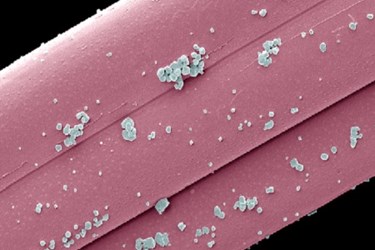The EPA Is Evaluating Nanoscale Antimicrobials For Food Packaging
By Isaac Fletcher, contributing writer, Food Online

The EPA is continuing its effort to gain important information about the human and environmental health effects of nanoscale antimicrobials in food packaging applications.
In recent years, great strides have been made in using nanotechnology within food packaging. In particular, the use of nanoscale antimicrobials, such as nanosilver, on or in food-contact materials is showing great promise as a game-changing innovation. However, as nanotechnology sees increases in rates of usage, regulatory bodies, such as FDA and the EPA, are stepping in to ensure that that the materials are safe to use in foods.
The FDA regulates antimicrobials within food-contact applications in the same way they regulate food additives under Section 409 of the Federal Food, Drug, And Cosmetic Act (FD&CA). Aside from regulatory oversight from the FDA, antimicrobials that are used in food applications also need to be registered with the EPA under the Federal Insecticide, Fungicide, and Rodenticide Act (FIFRA). In order to have a product registered by the EPA, the product needs to undergo an intensive review of its components, related manufacturing processes, intended uses, exposure to humans and the environment, and a thorough assessment of health and environmental risks associated with the product’s use.
Under FIFRA, nanoscale antimicrobials are considered to be a pesticide, since they are designed to destroy bacteria and other microorganisms. The use of an unregistered pesticide can result in consequential recourse carried out by the EPA, including warning letters to vendors carrying the product in question directing them to no longer sell the product.
In 2011, as the result of numerous companies inquiring about the registration of products containing nanosilver, the EPA announced its goal to obtain more information on nanoscale materials present in pesticide products. The announcement also provided details regarding the methodology that would be used by the EPA in determining on a case-by-case basis whether a nanoscale ingredient is a “new” active or inert ingredient for the purpose of registration.
Despite the filing of a petition in 2008 by the International Center for Technology Assessment (ICTA) and 13 other organizations requesting that the EPA regulate products containing nanosilver as pesticides, the 2011 proposal was never finalized. As a result, the ICTA filed a suit in December 2014 claiming that the EPA failed to respond to its petition. In response to the suit, the EPA announced on March 19, 2015 that it will apply FIFRA and FD&CA in addressing concerns related to the differences in macroscale and nanoscale silver ingredients. The EPA has not committed to a particular strategy and has denied the ICTA’s request to classify all nanosilver-containing products as pesticides. Instead, the EPA has elected to determine these classifications on a case-by-case basis.
In order to gain critical information on the nanomaterials, the EPA is conducting studies to divulge the human and environmental health implications of prevalent nanomaterials. As research is conducted, the agency is relying on protocols that are already in place to regulate nanotechnology in food contact applications.
